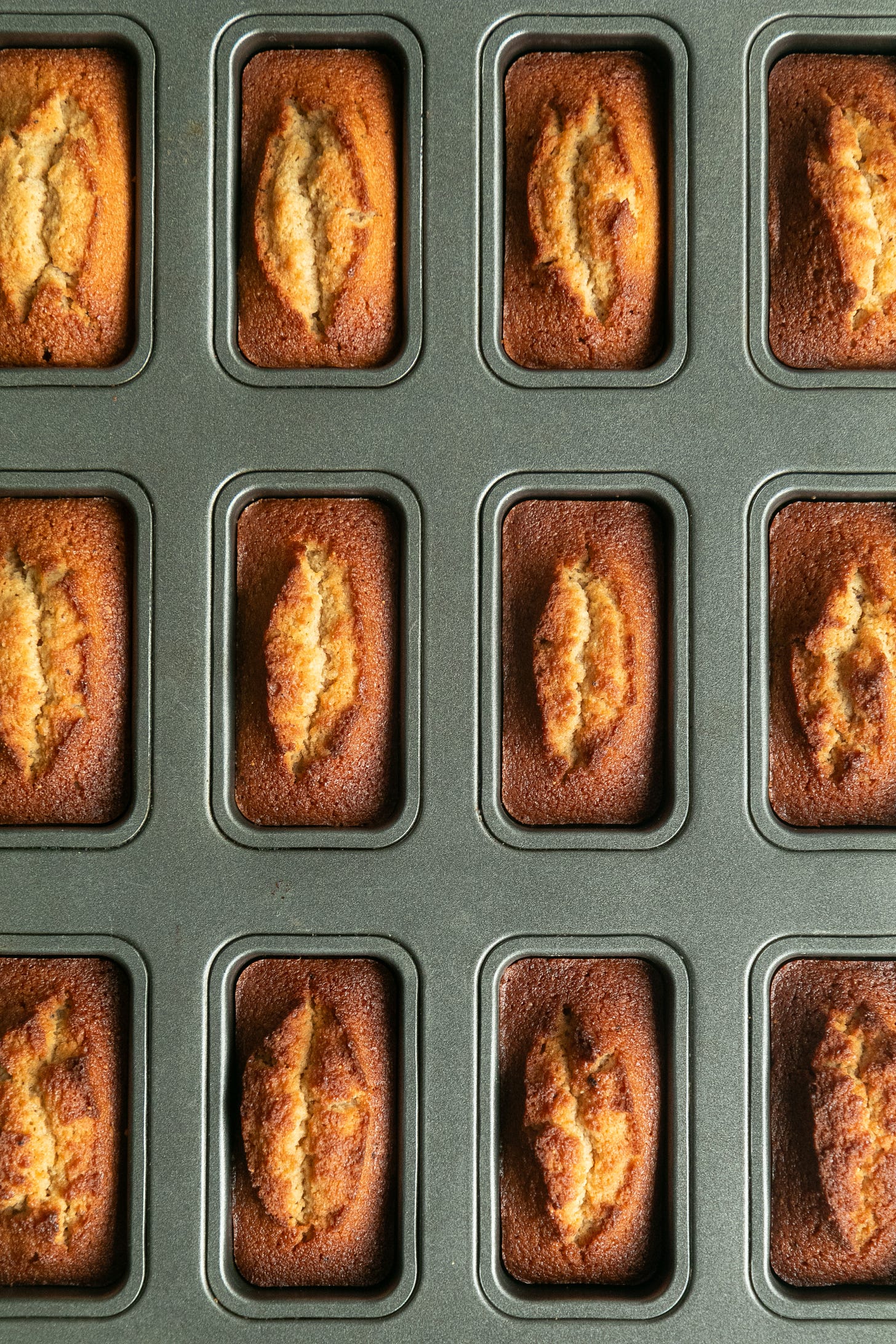Hello, and thanks for reading Latina Cooking. My recipes at the moment are for paid subscribers. Could I tempt you to pay so I can share more content with you? It costs less than a pint a month, almost the same as one coffee a month. Sounds reasonable? Click below - it will take you to your options, including becoming a free subscriber.
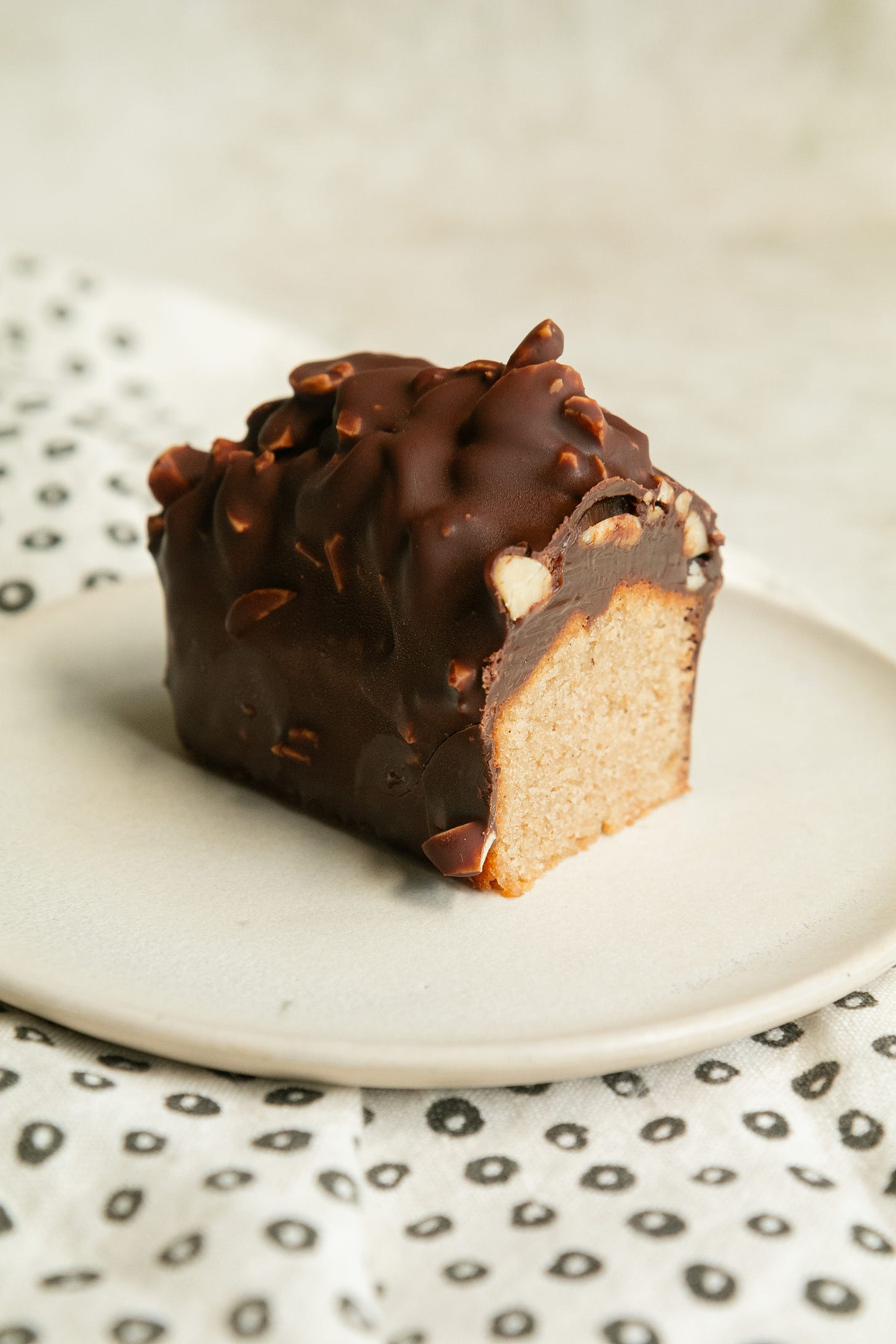
I went missing for a bit and decided to pause my newsletter, I had some BIG changes and couldn’t focus on writing. After almost seven years of living in Cambridge, I became a bit frustrated with the job prospects I had. That’s why I recently decided to move to London (or sort of, because I am still between both places and trying to figure out how to make it work). I am now working at E5 Bakehouse, a cool bakery that works with heritage grains located in Hackney, London. I am still adjusting a bit to all the changes and the move, so I anticipate it will be difficult for me to write every week but I will do my best to write at least two newsletters a month (I will make it up to my paid subscribers).
This week I am sharing a recipe of peanut butter financiers, coated with a caramel ganache, peanuts and chocolate. It is a refined version of a classic Snickers. However, the focus of this newsletter is on Latin American food and ingredients origins, so I am including a short history of the peanut, a plant that not many know is originally from South America.
Peanuts are BIG in Latin America. Despite peanuts 🥜 tiny size, they play a key role in many Latin American cultures. Even though some may think peanuts are nuts, they are, in fact, legumes. Despite their nut-like appearance, they are more closely related to peas than to almonds. To make it clear, peanuts are a botanical anomaly. The peanut plant produces a beautiful yellow orchid-like flower, that pushes out a peg that grows downward into the ground underneath, forming into a peanut (this sounds like magic to me). The underground growing of peanuts is what makes their harvest extremely laborious. The FAO estimates roughly 40% of a peanut farmer's time is invested in harvest-related tasks per crop cycle.1
Peanut origins
Maní, as we call them in Chile, Argentina, Peru, Bolivia and other Latin American countries, or cacahuates (the word used in Mexico which originates from the Nahuatl), are native to South America. Scientists think this legume has been growing around Peru, Bolivia, Argentina and Brazil for about 7,000 years. The oldest known archaeological remains of pods have been dated back to 7,600 years in Northern Peru.2
Ancient cultures from South America used peanuts for a wide range of purposes; from their use in different food dishes to peanut-shaped artworks and artefacts. An example of this is the pre-Columbian Moche culture, which depicted peanuts and cacao pods in their art (images below). The photos below were part of the campaign: “Corn, Cacao and Chilli. Gifts from Peru to the world” in Lima, Peru.
As early as 1500 B.C., the Incas used peanuts as part of their sacrificial offerings and entombed a portion of peanuts with their mummies, supposedly to aid the sacrificed soul in the spirit life.3 According to Jon Krampner, the author of ‘Creamy and Crunchy: An Informal History of Peanut Butter, the All-American Food’, the Incas ground peanuts and mixed it with chocolate, he refers to it as their prehistoric Nutella. Tribes in central Brazil also ground peanuts with maize to make a drink (which, to me, sounds delicious!). Throughout the years, archaeological research has provided evidence supporting that peanuts were a valued food in pre-Hispanic Andean societies. Peanuts store exceptionally well in cool and dry environments and, when kept in the pod, may last between eight and ten months. As they are well suited for long-term storage, it has been proposed they might have been used as agricultural tribute or tax, for instance, in the Virú polity's redistribution economy.
The growth of peanuts, with their pods developing underground, has led researchers to suggest that peanuts may have been part of a crop complex linked to death and fertility. Given the considerable effort required to cultivate peanuts, it is possible that elites included peanuts in ceremonial feasts not only to demonstrate the agricultural abundance of the region but also to emphasize their connection to the sacred.
The cultivation of peanuts was well-established in Mesoamerica before the Spanish arrived. When they arrived, they found the tlālcacahuatl (the plant's Nahuatl name, hence the name in Spanish cacahuate).
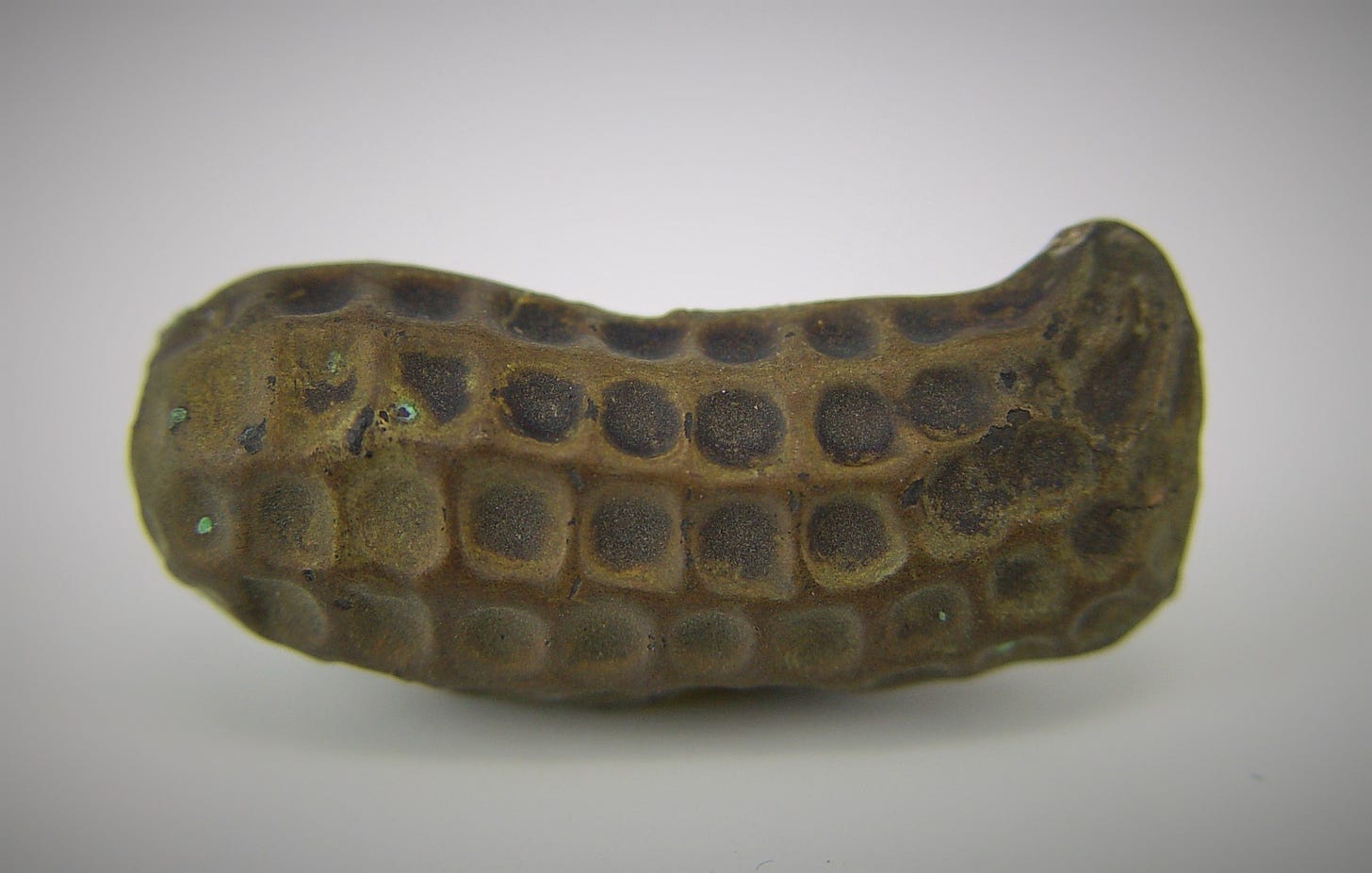

Fray Bartolomé de las Casas is considered by many the first one to write about peanuts. In his work, Apologías, written between 1550 and 1563, in what is now Haiti and the Dominican Republic, he describes the peanut as:
"They had another fruit that they planted and grew under the ground, which were not roots, but resembled the flesh of the Castilian hazelnut... they were in a similar way "Because the beans are in the pods... they are called peanuts."
So how did these tiny beans travel around the world?
First, of course, the Spanish arrived in South America and as Bartolomé de las Casas describes, peanuts were like something the Europeans already knew from back home. Peanuts had important benefits for sailors. As mentioned before, they store very well. Moreover, they’re an excellent source of energy and protein, making them an amazing food to take on long sea voyages. Peanuts were highly appreciated by the Spanish sailing from Acapulco to Manila, between 1565 and 1815, as they recognised in them a rich source of energy for the long journey. While the Spanish took peanuts to the west, the Portuguese took them to the east, mainly from Portugal’s colonies in Brazil to Africa and India.
After peanuts left America for the first time, they became popular basically wherever they went. But mostly in West Africa, where they caught on. The only other plant that grows like a peanut, with this flower-above-ground-fruit-below, is an African plant called the Bambara groundnut. So, west Africans already had some experience growing something similar. Peanuts became all the rage in West Africa, and, from there, they made their way back across the Atlantic to the U.S.. Most historians think they came on slave ships, but there is a lot of debate about the voyage of this tiny, but almighty legume. I found this book that dives deep into the history of colonialism and slavery in the peanut trade in Africa; Slaves for Peanuts: A Story of Conquest, Liberation, and a Crop That Changed History by Jori Lewis., recipient of the James Beard Award 2023. I want to read it to dive deeper into again another case of food colonialism.
Throughout Latin America, many candies and snacks are made using peanuts. My absolute favourite growing up is the Argentinian Marroc (I would love to eat them now because I haven’t had one in years), mantecol is also an Argentinian classic. In Mexico, it is common to find them in palanquetas, and even as peanut marzipan called De la rosa. There is a similar form of peanut candy in Brazil, called pé-de-moleque, made with peanuts and molasses. I am probably forgetting several peanut sweets from Latin America because there are too many, but this is to show how relevant peanuts are throughout the region.
As always when baking and cooking I consider it relevant to think about the source of the ingredients and the people behind them. To me, this gives the ingredients more value and I try, when possible, to purchase ingredients that I can trace their origins. In this case, I used Mani Life peanut butter, Forest Whole Foods peanuts and Río Nuevo chocolate.
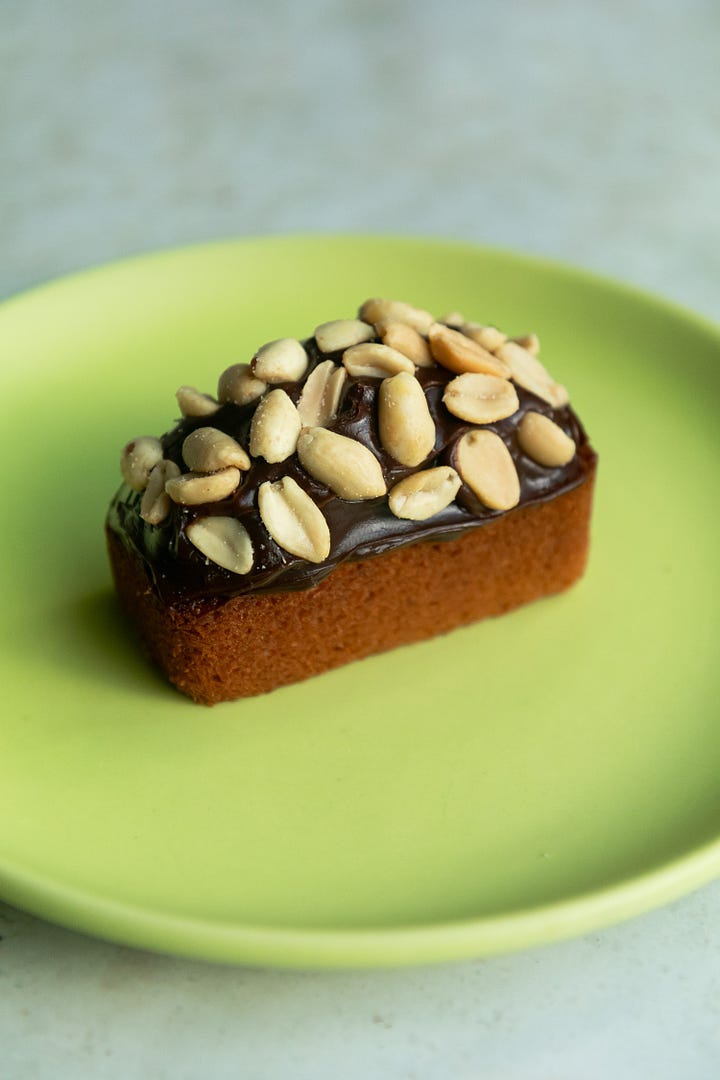
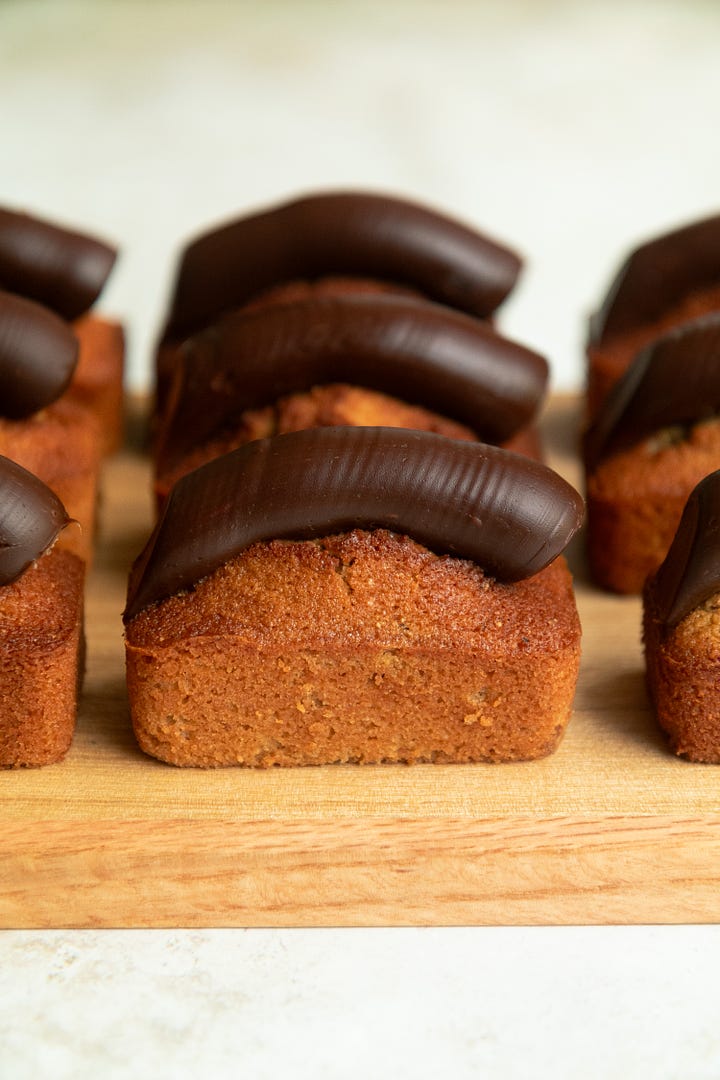
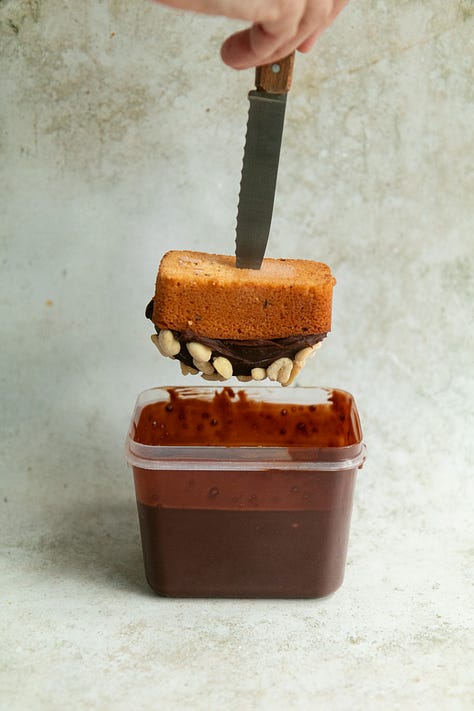
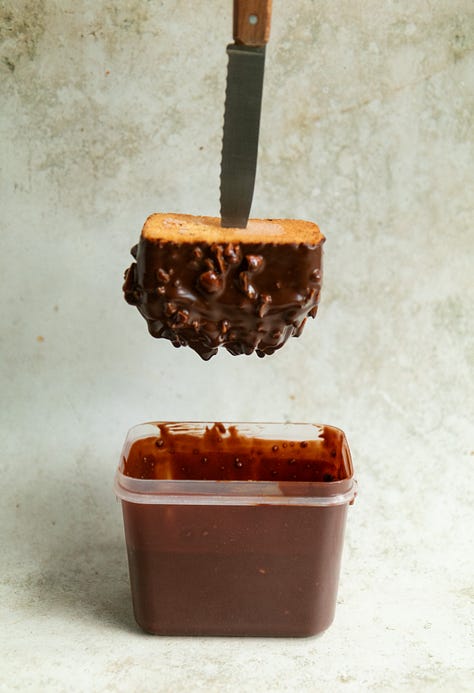
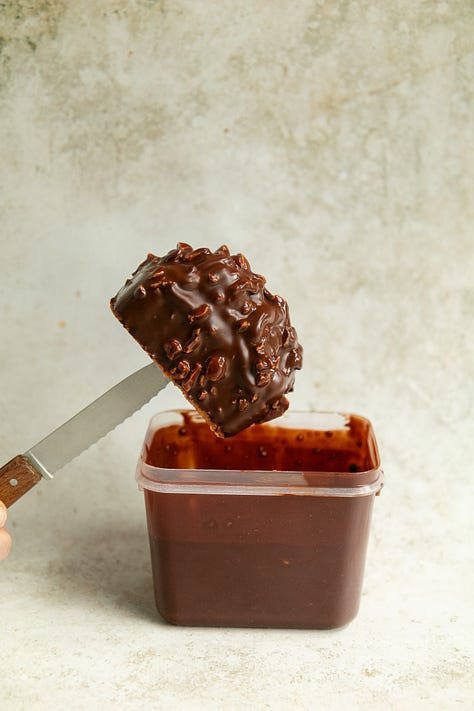
Peanut, caramel and chocolate bar
Peanut financier
Ingredients
Keep reading with a 7-day free trial
Subscribe to Latina Cooking to keep reading this post and get 7 days of free access to the full post archives.





